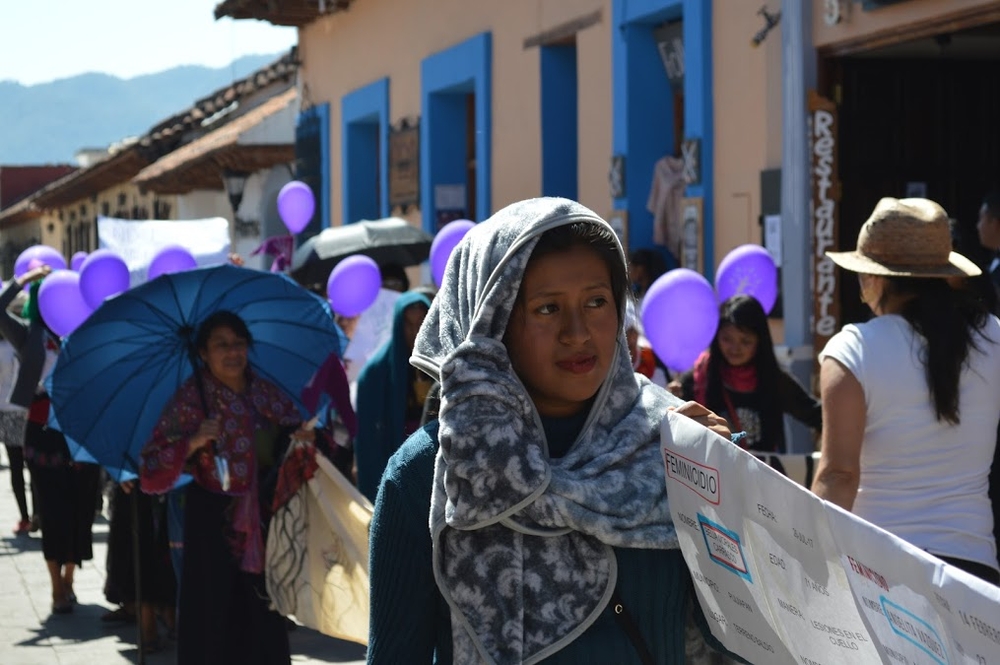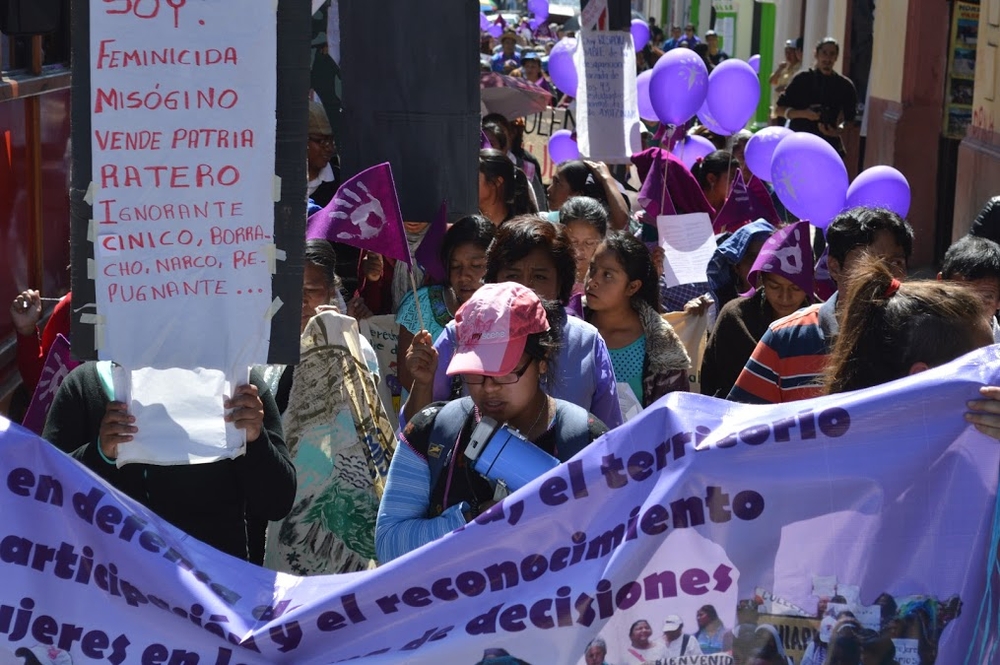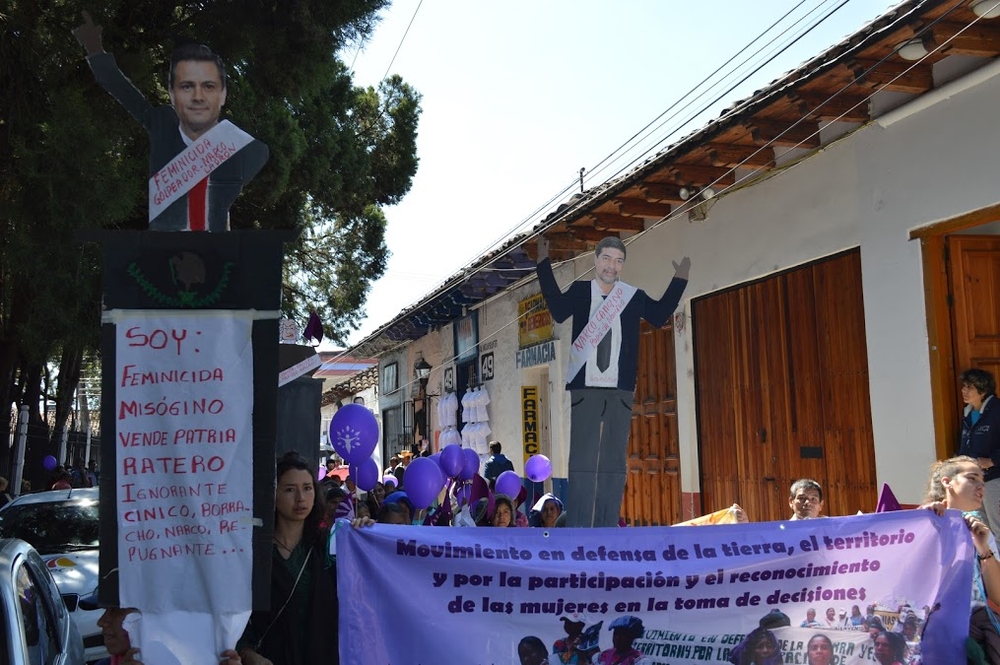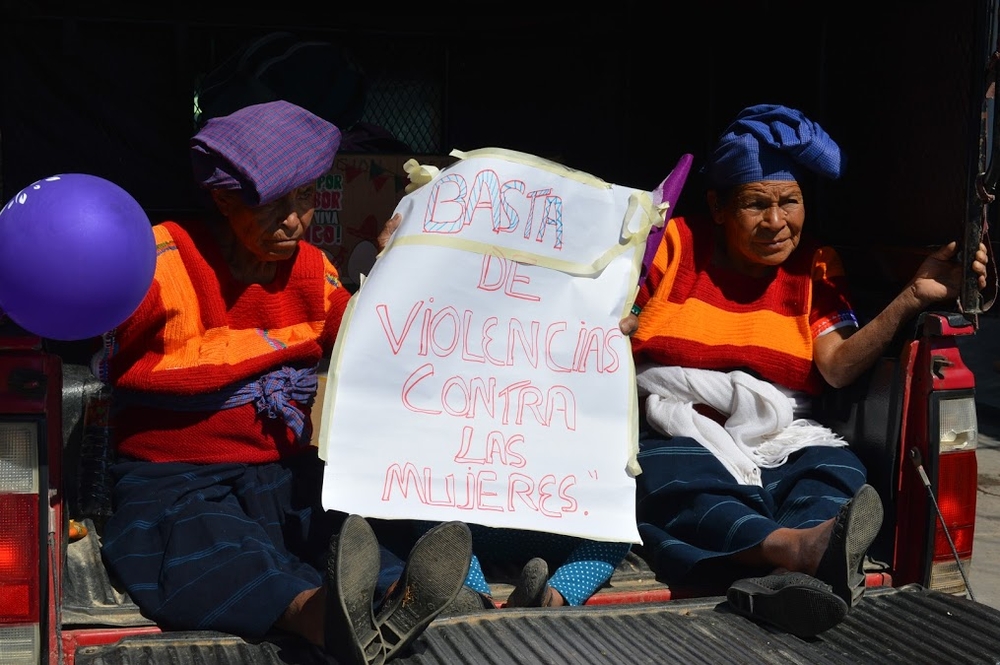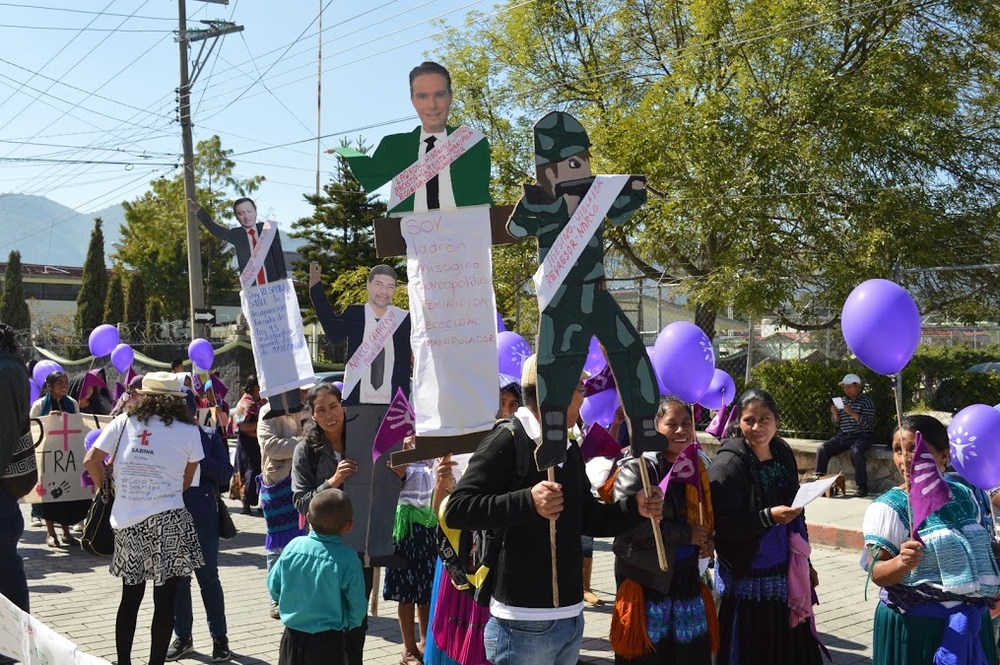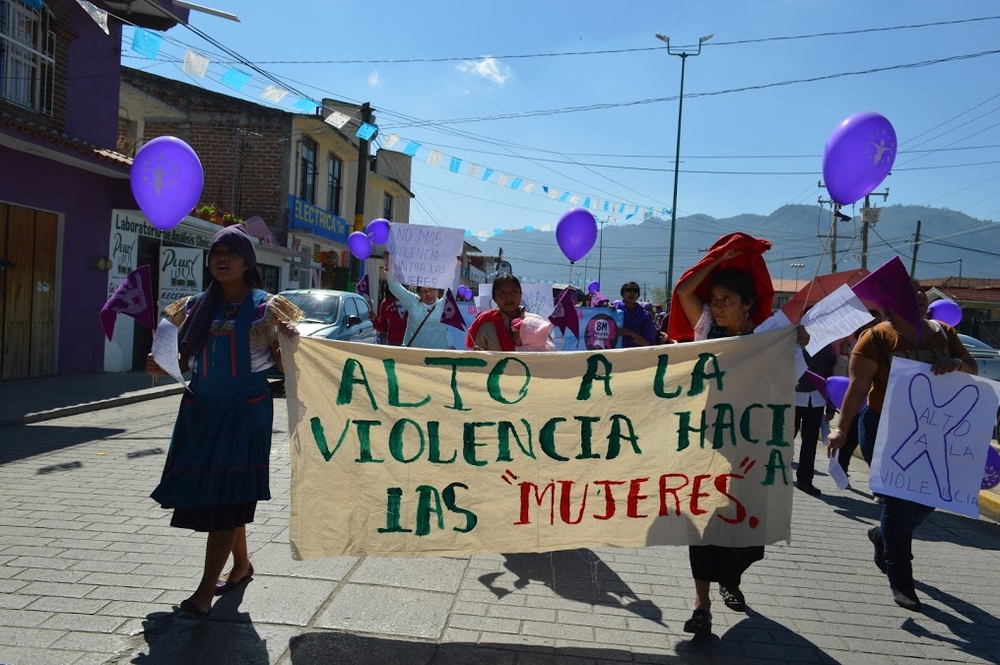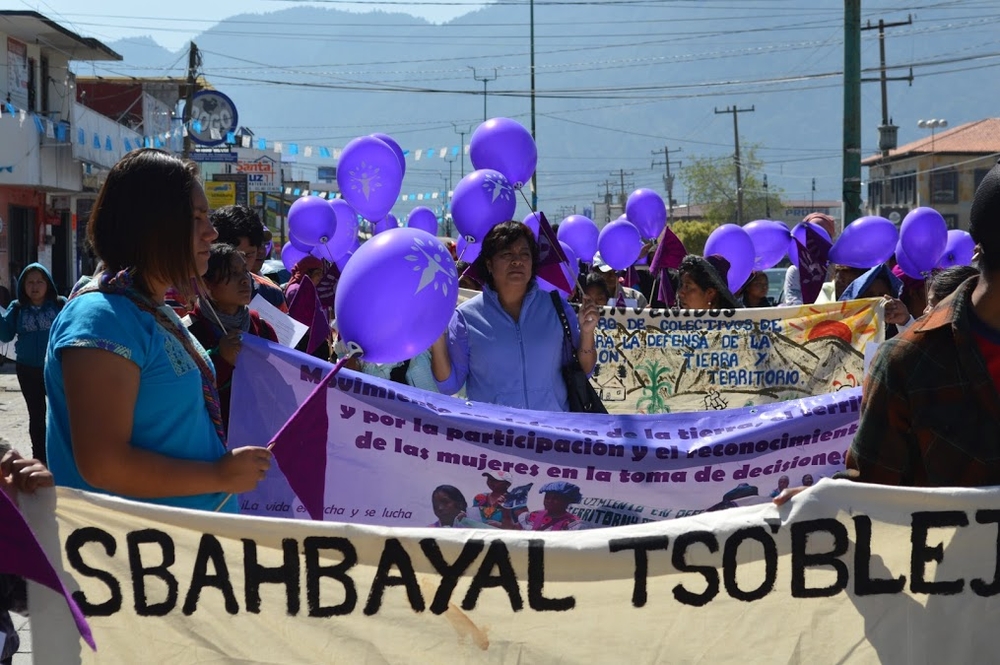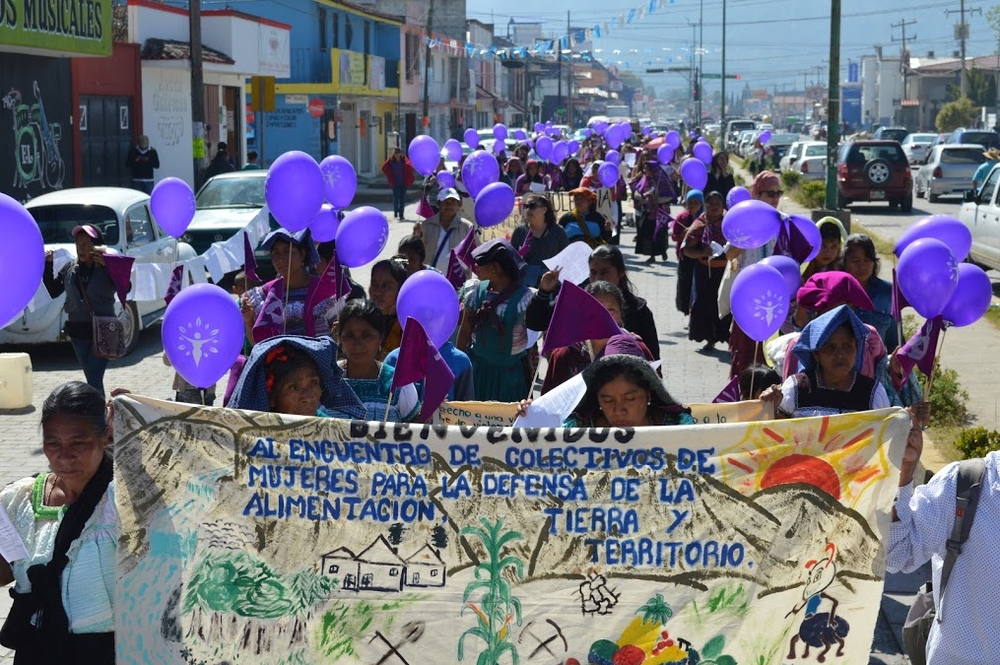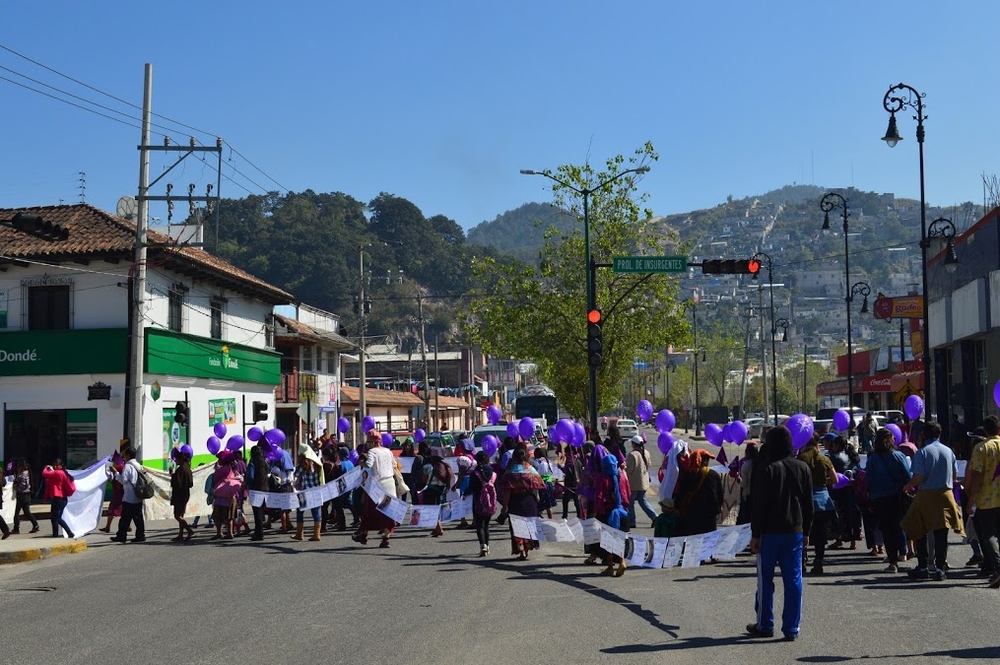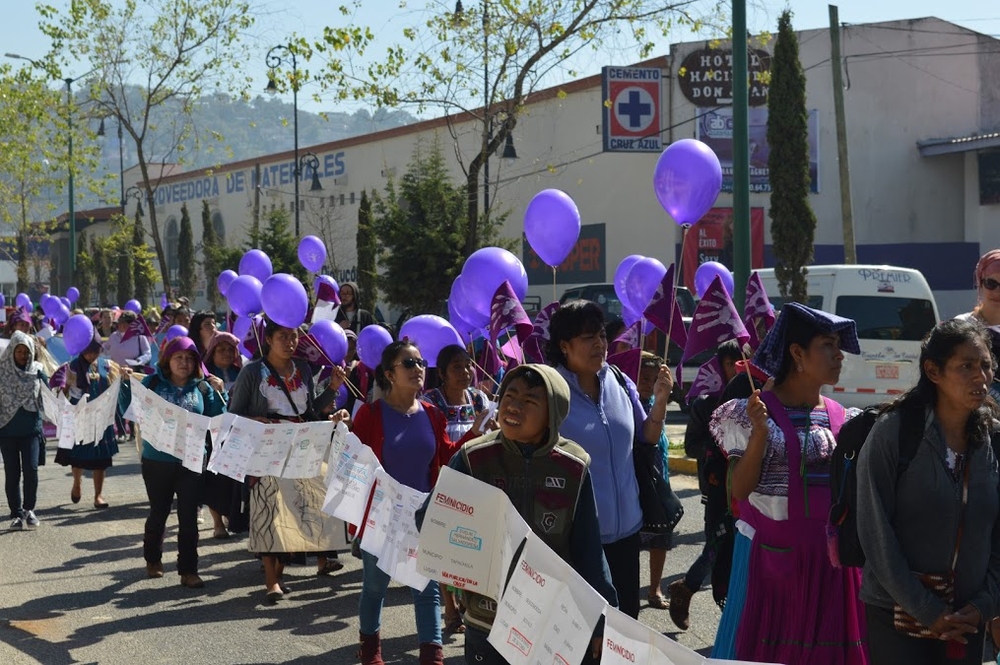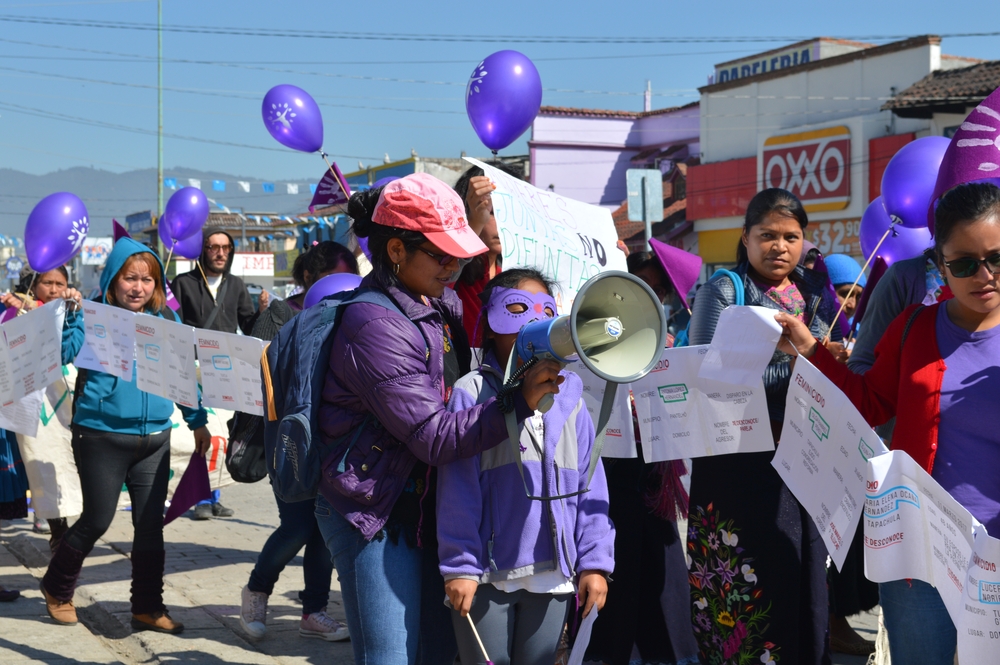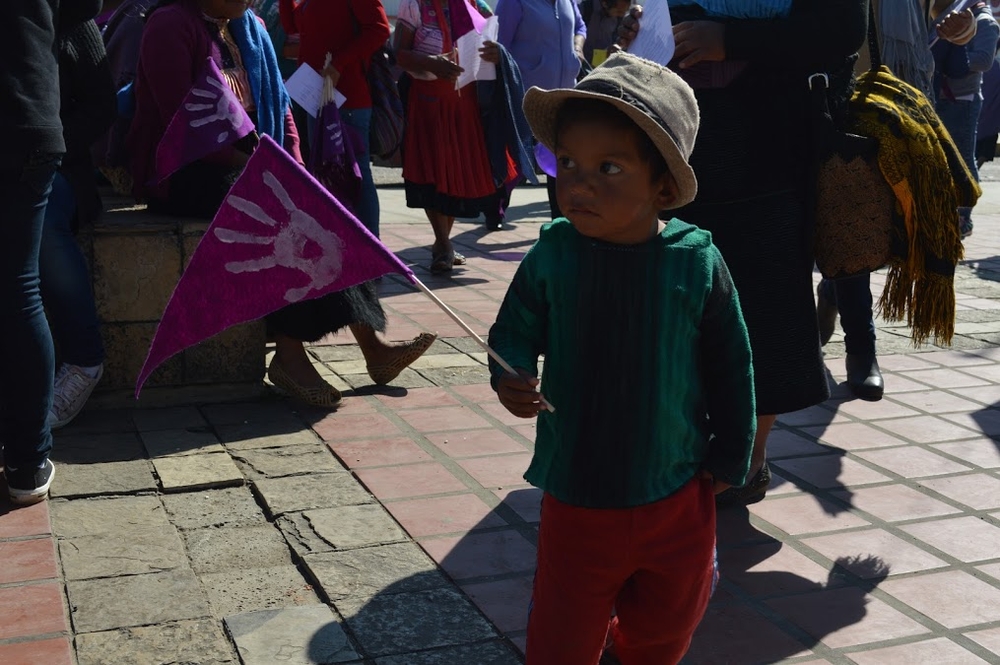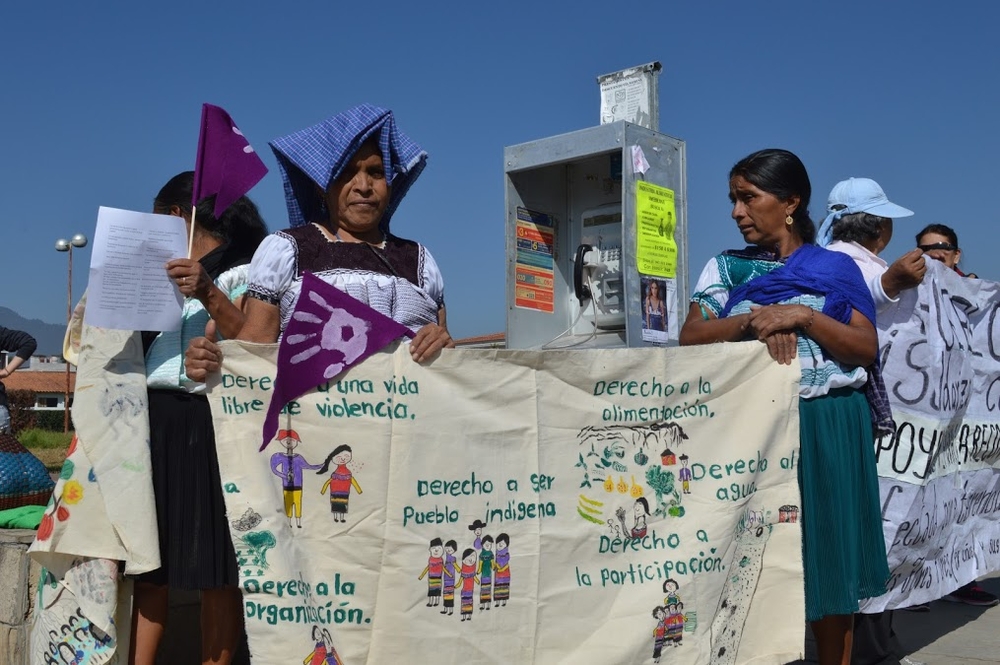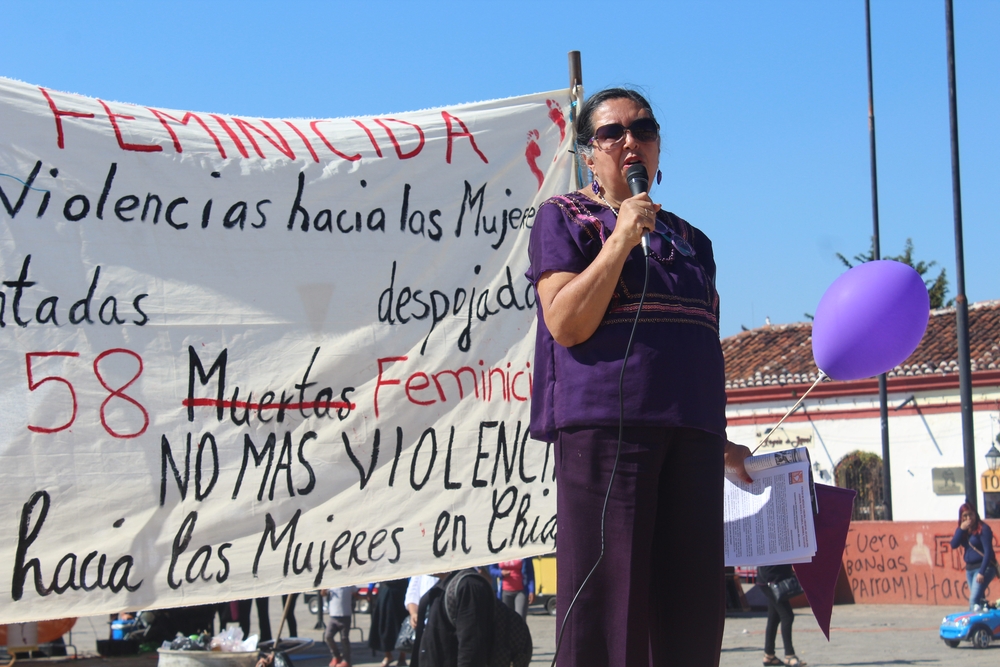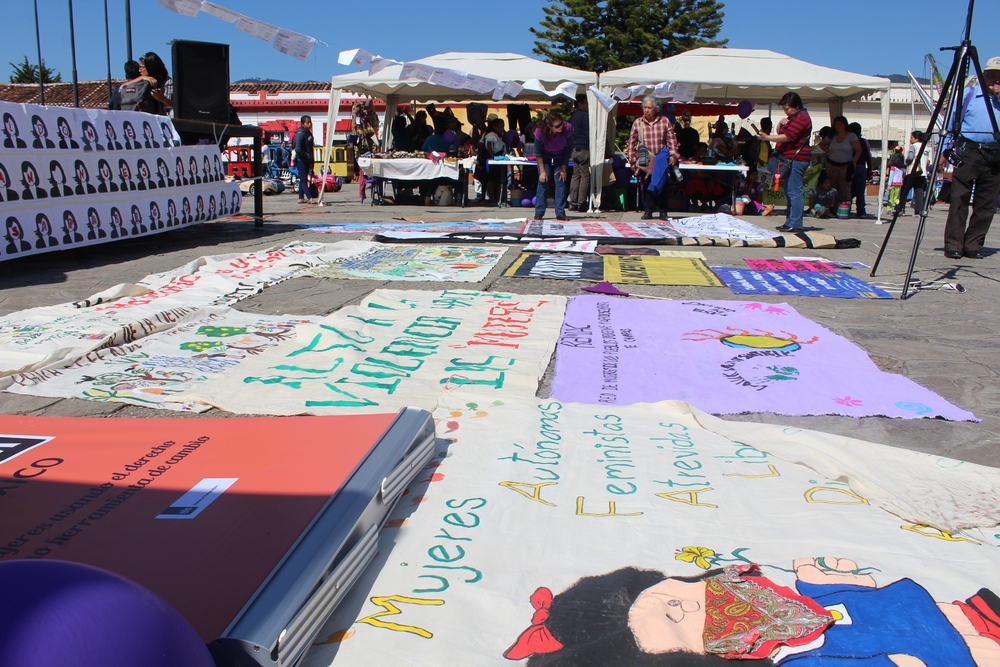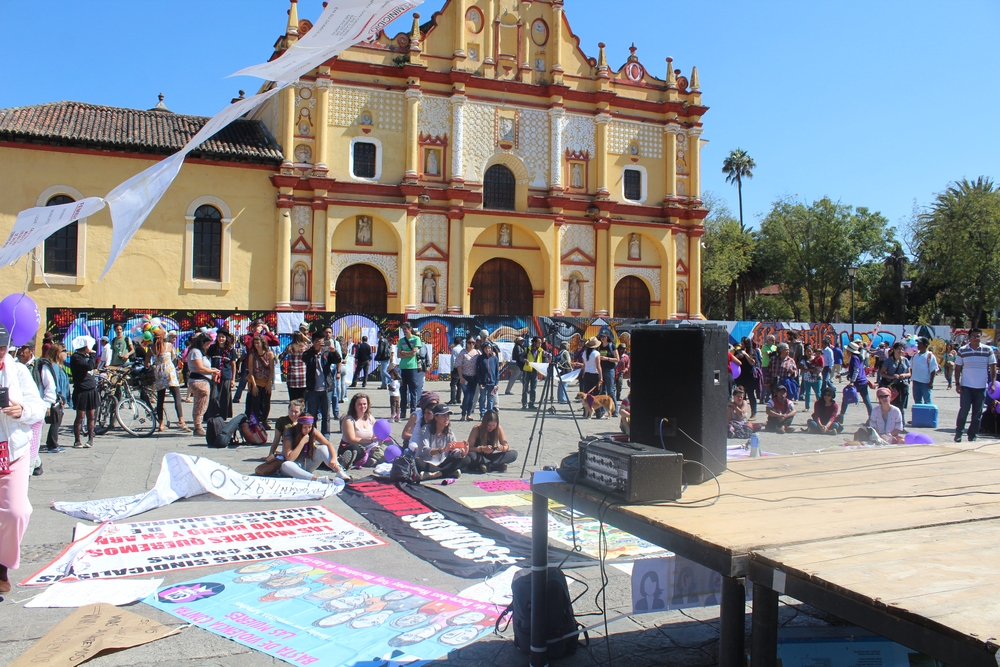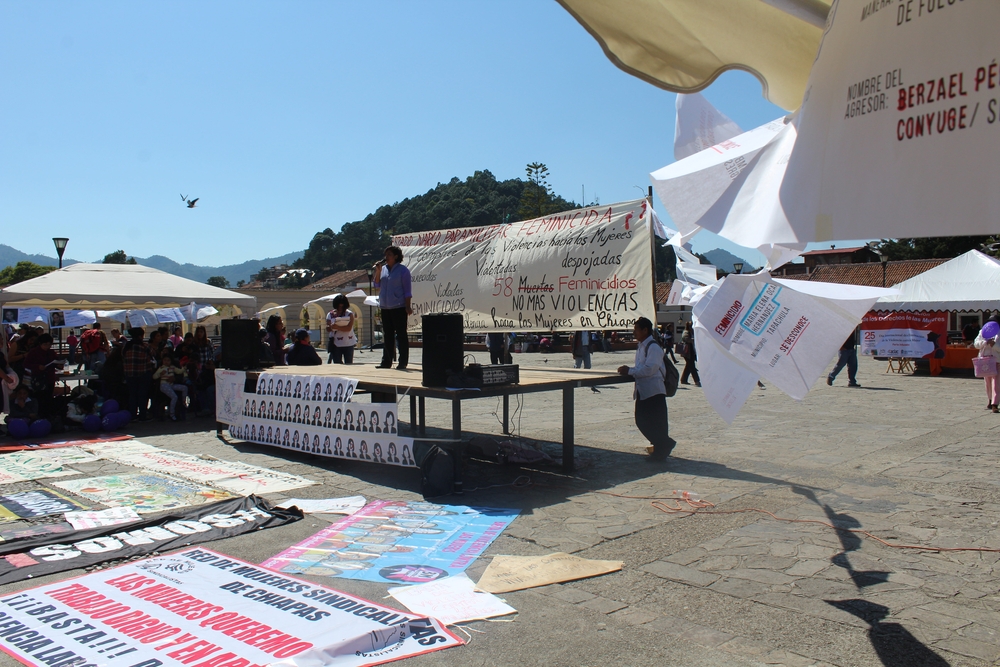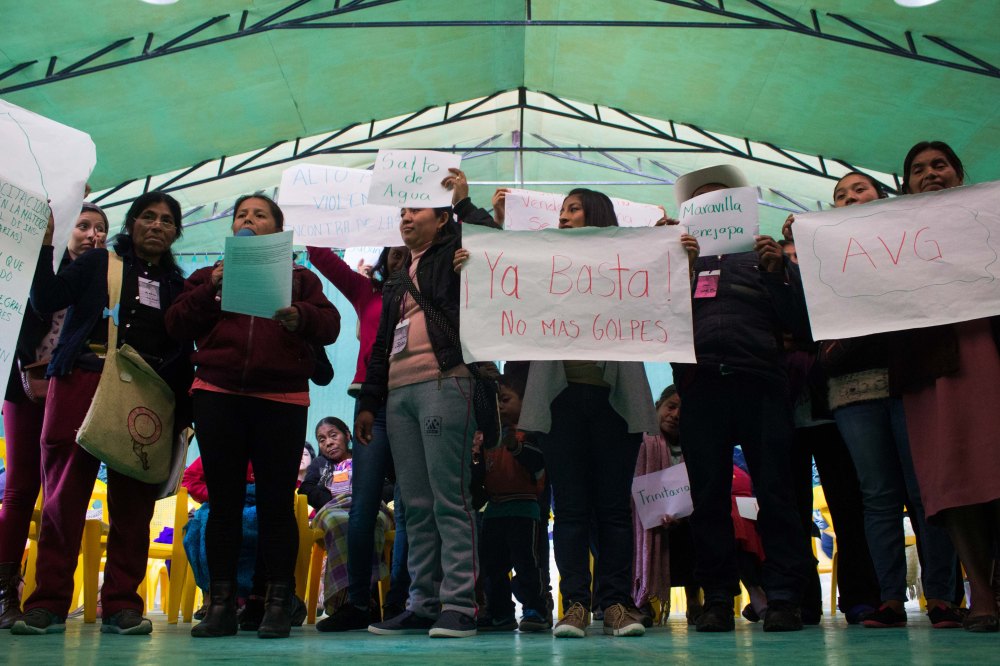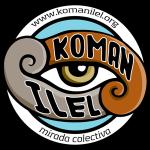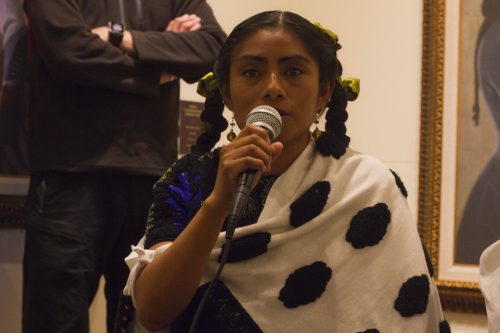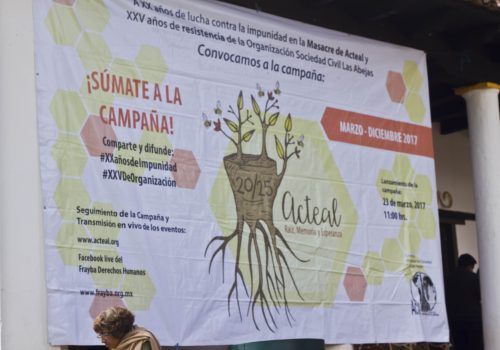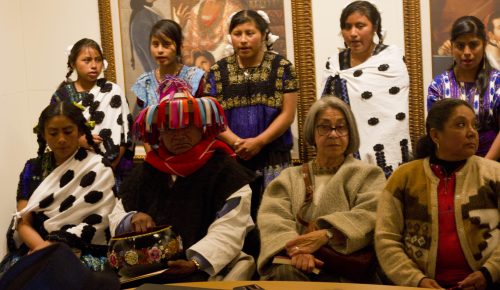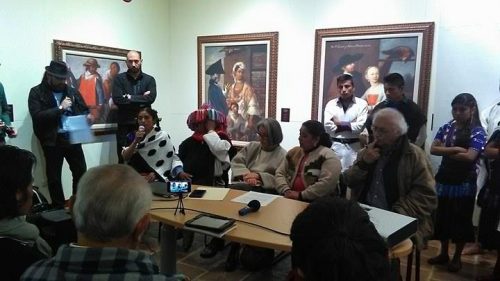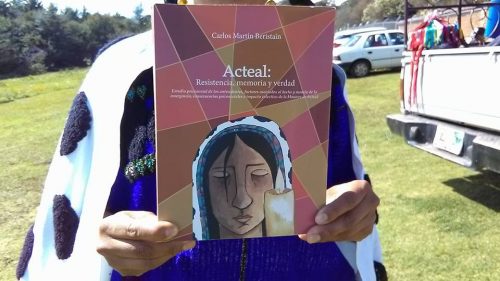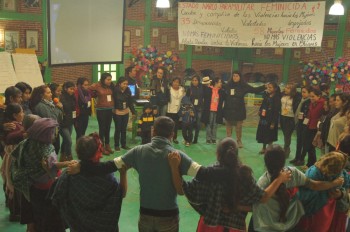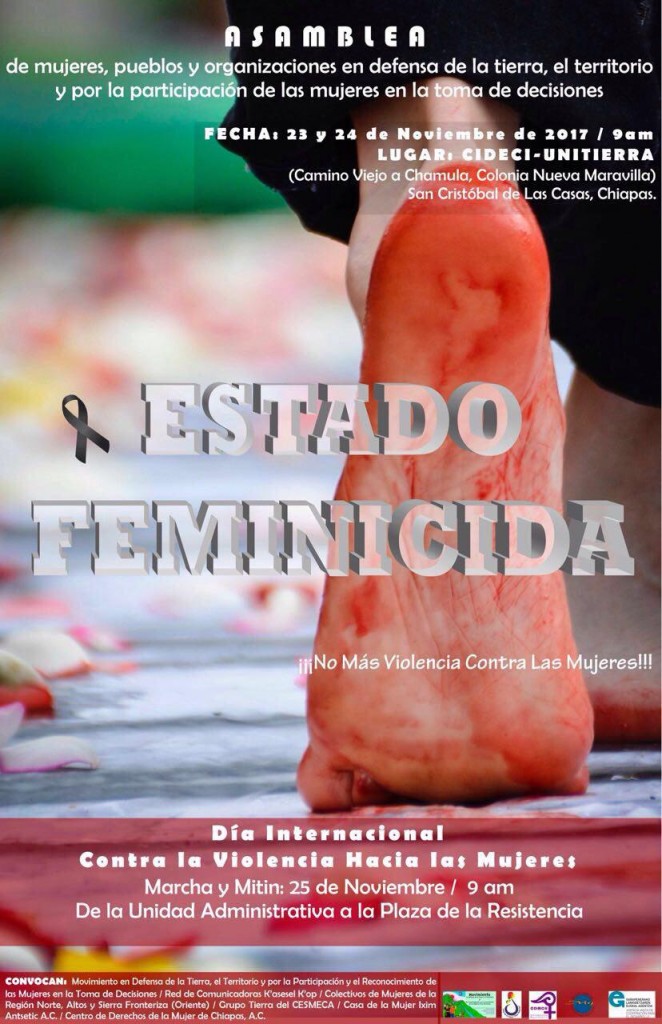
Chiapas

(Español) Pronunciamiento del Movimiento de Mujeres en Defensa del Territorio
25 DE NOVIEMBRE
“DIA INTERNACIONAL CONTRA LA VIOLENCIA HACIA LAS MUJERES”
PRONUNCIAMIENTO
En el marco del Día Internacional de Lucha Contra la Violencia Hacia las Mujeres, el pasado 23 y 24 de noviembre nos dimos cita mujeres, hombres, niñas y ancianas de distintas regiones de Chiapas, México y el Mundo en la Quinta Asamblea del Movimiento en Defensa de la Tierra, el Territorio y por la Participación y el Reconocimiento de las Mujeres en las Decisiones para denunciar el aumento de la violencia directa, institucional y estructural cuya emergencia y gravedad tenía que atender la Declaratoria de Alerta de Violencia de Género para las Mujeres de Chiapas (AVGM) y que el gobierno de Chiapas no ha cumplido.
Durante estos días compartimos testimonios de como la violencia hacia las mujeres y el feminicidio en Chiapas no es un problema que únicamente deban resolver hombres y mujeres en el ámbito privado, las familias en sus relaciones, comunidades al interior de los pueblos y organizaciones civiles en la promoción y defensa de derechos, es una responsabilidad sobre todo del Estado ya que la dimensión de la violencia feminicida tiene sus orígenes y causas en la violencia estructural como la pobreza, discriminación, injusticia, misoginia, desigualdad de clase, género, etnia edad, preferencia sexual, etc. que se reproduce desde las instituciones y agentes del Estado patriarcal.
Desde que se Declaró la Alerta de Violencia de Género, el pasado 18 de noviembre de 2016, el gobierno de Chiapas y el gobierno federal debieron implementar acciones de emergencia en materia de prevención, justicia, reparación del daño y una amplia difusión de mensajes de cero tolerancia a la violencia contra las mujeres, sin embargo en distintas ocasiones hemos denunciado que eso, hasta el día de hoy, no ha sucedido.
(Español) Día Internacional de lucha contra la violencia hacia las mujeres en San Cristóbal de Las Casas, Chiapas
Treinta y cinco desapariciones de mujeres, cientos de violaciones sexuales, más de 200 muertes violentas, por lo menos 58 feminicidios y 79 tentativas en Chiapas este año… el mismo año en que transcurre la Alerta de Violencia de Género (AVG), implementada en este estado el 18 de noviembre del año pasado.
Este pasado 25 de noviembre, en el marco del Día Internacional de Lucha contra la Violencia hacia las Mujeres, se realizó una marcha en San Cristóbal de Las Casas, que recorrió desde el centro administrativo hasta la Plaza de la Resistencia, frente a la catedral de la ciudad, donde tuvo lugar un mítin con la participación de diversas organizaciones. Esta marcha/mítin fue el cierre de la Quinta Asamblea del Movimiento en Defensa de la Tierra, el Territorio y por la Participación y el Reconocimiento de las Mujeres en las Decisiones, que se realizó los días 23 y 24 de noviembre (ve los reportajes aquí: primer día | segundo día).
En dicha asamblea se discutió la responsabilidad del Estado en la violencia hacia las mujeres y el feminicidio, y se discutió la ineficacia y el uso oportunista de la Alerta de Violencia de Género por el Estado, tanto para dividir y cooptar las resistencias como para obtener beneficios políticos y desvío de recursos con fines de lucro personal por parte de los funcionarios públicos.
Durante el mítin, varias organizaciones denunciaron los diferentes ejes de la violencia contra las mujeres en Chiapas, trazando así un paisaje de violencia estructural que, a un año de la implementación de la AVG, sólo ha empeorado.
Escucha aquí los audios:
(Para descargar, haz clic con el botón derecho en el título del audio y selecciona “Guardar vínculo como…”)
Lee el pronunciamiento del Movimiento de Mujeres en Defensa del Territorio.

